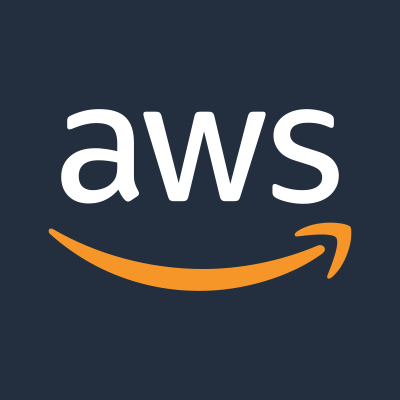Mock sample for your project: SubscriptionDefinitionsClient API
Integrate with "SubscriptionDefinitionsClient API" from azure.com in no time with Mockoon's ready to use mock sample

SubscriptionDefinitionsClient
azure.com
Version: 2017-11-01-preview
Integrate third-party APIs faster by using "SubscriptionDefinitionsClient API" ready-to-use mock sample. Mocking this API will help you accelerate your development lifecycles and improves your integration tests' quality and reliability by accounting for random failures, slow response time, etc.
It also helps reduce your dependency on third-party APIs: no more accounts to create, API keys to provision, accesses to configure, unplanned downtime, etc.
Description
Subscription definitions client provides an interface to create, modify and retrieve azure subscriptions programmatically.
Other APIs by azure.com

SqlManagementClient
azure.com
The Azure SQL Database management API provides a RESTful set of web APIs that interact with Azure SQL Database services to manage your databases. The API enables users to create, retrieve, update, and delete databases, servers, and other entities.

ApplicationInsightsManagementClient
azure.com
Azure Application Insights client for selecting pricing plans and options.

AutomationManagement
azure.com

AutomationManagement
azure.com

ApplicationInsightsManagementClient
azure.com
Azure Application Insights client for Continuous Export of a component.

ApiManagementClient
azure.com
Use these REST APIs to get the analytics reports associated with your Azure API Management deployment.

AuthorizationManagementClient
azure.com
Role based access control provides you a way to apply granular level policy administration down to individual resources or resource groups. These operations enable you to manage role definitions and role assignments. A role definition describes the set of actions that can be performed on resources. A role assignment grants access to Azure Active Directory users.

Azure Enterprise Knowledge Graph Service
azure.com
Azure Enterprise Knowledge Graph Service is a platform for creating knowledge graphs at scale.
Other APIs in the same category

ApiManagementClient
azure.com
Use these REST APIs for performing operations on Email Templates associated with your Azure API Management deployment.

OpenALPR CarCheck API
openalpr.com
The OpenALPR CarCheck API allows you to send images to the cloud for processing.
The image will be analyzed for license plates and vehicle make/models. The results
are returned in JSON format
The image will be analyzed for license plates and vehicle make/models. The results
are returned in JSON format
Linode API
Introduction
The Linode API provides the ability to programmatically manage the full
range of Linode products and services.
This reference is designed to assist application developers and system
administrators. Each endpoint includes descriptions, request syntax, and
examples using standard HTTP requests. Response data is returned in JSON
format.
This document was generated from our OpenAPI Specification. See the
OpenAPI website for more information.
Download the Linode OpenAPI Specification.
Changelog
View our Changelog to see release
notes on all changes made to our API.
Access and Authentication
Some endpoints are publicly accessible without requiring authentication.
All endpoints affecting your Account, however, require either a Personal
Access Token or OAuth authentication (when using third-party
applications).
Personal Access Token
The easiest way to access the API is with a Personal Access Token (PAT)
generated from the
Linode Cloud Manager or
the Create Personal Access Token endpoint.
All scopes for the OAuth security model (defined below) apply to this
security model as well.
Authentication
| Security Scheme Type: | HTTP |
|-----------------------|------|
| HTTP Authorization Scheme | bearer |
OAuth
If you only need to access the Linode API for personal use,
we recommend that you create a personal access token.
If you're designing an application that can authenticate with an arbitrary Linode user, then
you should use the OAuth 2.0 workflows presented in this section.
For a more detailed example of an OAuth 2.0 implementation, see our guide on How to Create an OAuth App with the Linode Python API Library.
Before you implement OAuth in your application, you first need to create an OAuth client. You can do this with the Linode API or via the Cloud Manager:
When creating the client, you'll supply a label and a redirect_uri (referred to as the Callback URL in the Cloud Manager).
The response from this endpoint will give you a client_id and a secret.
Clients can be public or private, and are private by default. You can choose to make the client public when it is created.
A private client is used with applications which can securely store the client secret (that is, the secret returned to you when you first created the client). For example, an application running on a secured server that only the developer has access to would use a private OAuth client. This is also called a confidential client in some OAuth documentation.
A public client is used with applications where the client secret is not guaranteed to be secure. For example, a native app running on a user's computer may not be able to keep the client secret safe, as a user could potentially inspect the source of the application. So, native apps or apps that run in a user's browser should use a public client.
Public and private clients follow different workflows, as described below.
OAuth Workflow
The OAuth workflow is a series of exchanges between your third-party app and Linode. The workflow is used
to authenticate a user before an application can start making API calls on the user's behalf.
Notes:
With respect to the diagram in section 1.2 of RFC 6749, login.linode.com (referred to in this section as the login server)
is the Resource Owner and the Authorization Server; api.linode.com (referred to here as the api server) is the Resource Server.
The OAuth spec refers to the private and public workflows listed below as the authorization code flow and implicit flow.
| PRIVATE WORKFLOW | PUBLIC WORKFLOW |
|------------------|------------------|
| 1. The user visits the application's website and is directed to login with Linode. | 1. The user visits the application's website and is directed to login with Linode. |
| 2. Your application then redirects the user to Linode's login server with the client application's clientid and requested OAuth scope, which should appear in the URL of the login page. | 2. Your application then redirects the user to Linode's login server with the client application's clientid and requested OAuth scope, which should appear in the URL of the login page. |
| 3. The user logs into the login server with their username and password. | 3. The user logs into the login server with their username and password. |
| 4. The login server redirects the user to the specificed redirect URL with a temporary authorization code (exchange code) in the URL. | 4. The login server redirects the user back to your application with an OAuth accesstoken embedded in the redirect URL's hash. This is temporary and expires in two hours. No refreshtoken is issued. Therefore, once the access_token expires, a new one will need to be issued by having the user log in again. |
| 5. The application issues a POST request (see below) to the login server with the exchange code, clientid, and the client application's clientsecret. | |
| 6. The login server responds to the client application with a new OAuth accesstoken and refreshtoken. The access_token is set to expire in two hours. | |
| 7. The refreshtoken can be used by contacting the login server with the clientid, clientsecret, granttype, and refreshtoken to get a new OAuth accesstoken and refreshtoken. The new accesstoken is good for another two hours, and the new refresh_token, can be used to extend the session again by this same method. | |
OAuth Private Workflow - Additional Details
The following information expands on steps 5 through 7 of the private workflow:
Once the user has logged into Linode and you have received an exchange code,
you will need to trade that exchange code for an accesstoken and refreshtoken. You
do this by making an HTTP POST request to the following address:
Rate Limiting
With the Linode API, you can make up to 1,600 general API requests every two minutes per user as
determined by IP adddress or by OAuth token. Additionally, there are endpoint specfic limits defined below.
Note: There may be rate limiting applied at other levels outside of the API, for example, at the load balancer.
/stats endpoints have their own dedicated limits of 100 requests per minute per user.
These endpoints are:
View Linode Statistics
View Linode Statistics (year/month)
View NodeBalancer Statistics
List Managed Stats
Object Storage endpoints have a dedicated limit of 750 requests per second per user.
The Object Storage endpoints are:
Object Storage Endpoints
Opening Support Tickets has a dedicated limit of 2 requests per minute per user.
That endpoint is:
Open Support Ticket
Accepting Service Transfers has a dedicated limit of 2 requests per minute per user.
That endpoint is:
Service Transfer Accept
CLI (Command Line Interface)
The Linode CLI allows you to easily
work with the API using intuitive and simple syntax. It requires a
Personal Access Token
for authentication, and gives you access to all of the features and functionality
of the Linode API that are documented here with CLI examples.
Endpoints that do not have CLI examples are currently unavailable through the CLI, but
can be accessed via other methods such as Shell commands and other third-party applications.
The Linode API provides the ability to programmatically manage the full
range of Linode products and services.
This reference is designed to assist application developers and system
administrators. Each endpoint includes descriptions, request syntax, and
examples using standard HTTP requests. Response data is returned in JSON
format.
This document was generated from our OpenAPI Specification. See the
OpenAPI website for more information.
Download the Linode OpenAPI Specification.
Changelog
View our Changelog to see release
notes on all changes made to our API.
Access and Authentication
Some endpoints are publicly accessible without requiring authentication.
All endpoints affecting your Account, however, require either a Personal
Access Token or OAuth authentication (when using third-party
applications).
Personal Access Token
The easiest way to access the API is with a Personal Access Token (PAT)
generated from the
Linode Cloud Manager or
the Create Personal Access Token endpoint.
All scopes for the OAuth security model (defined below) apply to this
security model as well.
Authentication
| Security Scheme Type: | HTTP |
|-----------------------|------|
| HTTP Authorization Scheme | bearer |
OAuth
If you only need to access the Linode API for personal use,
we recommend that you create a personal access token.
If you're designing an application that can authenticate with an arbitrary Linode user, then
you should use the OAuth 2.0 workflows presented in this section.
For a more detailed example of an OAuth 2.0 implementation, see our guide on How to Create an OAuth App with the Linode Python API Library.
Before you implement OAuth in your application, you first need to create an OAuth client. You can do this with the Linode API or via the Cloud Manager:
When creating the client, you'll supply a label and a redirect_uri (referred to as the Callback URL in the Cloud Manager).
The response from this endpoint will give you a client_id and a secret.
Clients can be public or private, and are private by default. You can choose to make the client public when it is created.
A private client is used with applications which can securely store the client secret (that is, the secret returned to you when you first created the client). For example, an application running on a secured server that only the developer has access to would use a private OAuth client. This is also called a confidential client in some OAuth documentation.
A public client is used with applications where the client secret is not guaranteed to be secure. For example, a native app running on a user's computer may not be able to keep the client secret safe, as a user could potentially inspect the source of the application. So, native apps or apps that run in a user's browser should use a public client.
Public and private clients follow different workflows, as described below.
OAuth Workflow
The OAuth workflow is a series of exchanges between your third-party app and Linode. The workflow is used
to authenticate a user before an application can start making API calls on the user's behalf.
Notes:
With respect to the diagram in section 1.2 of RFC 6749, login.linode.com (referred to in this section as the login server)
is the Resource Owner and the Authorization Server; api.linode.com (referred to here as the api server) is the Resource Server.
The OAuth spec refers to the private and public workflows listed below as the authorization code flow and implicit flow.
| PRIVATE WORKFLOW | PUBLIC WORKFLOW |
|------------------|------------------|
| 1. The user visits the application's website and is directed to login with Linode. | 1. The user visits the application's website and is directed to login with Linode. |
| 2. Your application then redirects the user to Linode's login server with the client application's clientid and requested OAuth scope, which should appear in the URL of the login page. | 2. Your application then redirects the user to Linode's login server with the client application's clientid and requested OAuth scope, which should appear in the URL of the login page. |
| 3. The user logs into the login server with their username and password. | 3. The user logs into the login server with their username and password. |
| 4. The login server redirects the user to the specificed redirect URL with a temporary authorization code (exchange code) in the URL. | 4. The login server redirects the user back to your application with an OAuth accesstoken embedded in the redirect URL's hash. This is temporary and expires in two hours. No refreshtoken is issued. Therefore, once the access_token expires, a new one will need to be issued by having the user log in again. |
| 5. The application issues a POST request (see below) to the login server with the exchange code, clientid, and the client application's clientsecret. | |
| 6. The login server responds to the client application with a new OAuth accesstoken and refreshtoken. The access_token is set to expire in two hours. | |
| 7. The refreshtoken can be used by contacting the login server with the clientid, clientsecret, granttype, and refreshtoken to get a new OAuth accesstoken and refreshtoken. The new accesstoken is good for another two hours, and the new refresh_token, can be used to extend the session again by this same method. | |
OAuth Private Workflow - Additional Details
The following information expands on steps 5 through 7 of the private workflow:
Once the user has logged into Linode and you have received an exchange code,
you will need to trade that exchange code for an accesstoken and refreshtoken. You
do this by making an HTTP POST request to the following address:
Rate Limiting
With the Linode API, you can make up to 1,600 general API requests every two minutes per user as
determined by IP adddress or by OAuth token. Additionally, there are endpoint specfic limits defined below.
Note: There may be rate limiting applied at other levels outside of the API, for example, at the load balancer.
/stats endpoints have their own dedicated limits of 100 requests per minute per user.
These endpoints are:
View Linode Statistics
View Linode Statistics (year/month)
View NodeBalancer Statistics
List Managed Stats
Object Storage endpoints have a dedicated limit of 750 requests per second per user.
The Object Storage endpoints are:
Object Storage Endpoints
Opening Support Tickets has a dedicated limit of 2 requests per minute per user.
That endpoint is:
Open Support Ticket
Accepting Service Transfers has a dedicated limit of 2 requests per minute per user.
That endpoint is:
Service Transfer Accept
CLI (Command Line Interface)
The Linode CLI allows you to easily
work with the API using intuitive and simple syntax. It requires a
Personal Access Token
for authentication, and gives you access to all of the features and functionality
of the Linode API that are documented here with CLI examples.
Endpoints that do not have CLI examples are currently unavailable through the CLI, but
can be accessed via other methods such as Shell commands and other third-party applications.

AWS Elemental MediaStore
An AWS Elemental MediaStore container is a namespace that holds folders and objects. You use a container endpoint to create, read, and delete objects.

AWS Cost Explorer Service
You can use the Cost Explorer API to programmatically query your cost and usage data. You can query for aggregated data such as total monthly costs or total daily usage. You can also query for granular data. This might include the number of daily write operations for Amazon DynamoDB database tables in your production environment. Service Endpoint The Cost Explorer API provides the following endpoint: https://ce.us-east-1.amazonaws.com For information about the costs that are associated with the Cost Explorer API, see Amazon Web Services Cost Management Pricing.

Netlify's API documentation
Netlify is a hosting service for the programmable web. It understands your documents and provides an API to handle atomic deploys of websites, manage form submissions, inject JavaScript snippets, and much more. This is a REST-style API that uses JSON for serialization and OAuth 2 for authentication.
This document is an OpenAPI reference for the Netlify API that you can explore. For more detailed instructions for common uses, please visit the online documentation. Visit our Community forum to join the conversation about understanding and using Netlify’s API.
Additionally, we have two API clients for your convenience:
Go Client
JS Client
This document is an OpenAPI reference for the Netlify API that you can explore. For more detailed instructions for common uses, please visit the online documentation. Visit our Community forum to join the conversation about understanding and using Netlify’s API.
Additionally, we have two API clients for your convenience:
Go Client
JS Client

Custom Vision Prediction Client
microsoft.com

AWS CodeDeploy
AWS CodeDeploy AWS CodeDeploy is a deployment service that automates application deployments to Amazon EC2 instances, on-premises instances running in your own facility, serverless AWS Lambda functions, or applications in an Amazon ECS service. You can deploy a nearly unlimited variety of application content, such as an updated Lambda function, updated applications in an Amazon ECS service, code, web and configuration files, executables, packages, scripts, multimedia files, and so on. AWS CodeDeploy can deploy application content stored in Amazon S3 buckets, GitHub repositories, or Bitbucket repositories. You do not need to make changes to your existing code before you can use AWS CodeDeploy. AWS CodeDeploy makes it easier for you to rapidly release new features, helps you avoid downtime during application deployment, and handles the complexity of updating your applications, without many of the risks associated with error-prone manual deployments. AWS CodeDeploy Components Use the information in this guide to help you work with the following AWS CodeDeploy components: Application : A name that uniquely identifies the application you want to deploy. AWS CodeDeploy uses this name, which functions as a container, to ensure the correct combination of revision, deployment configuration, and deployment group are referenced during a deployment. Deployment group : A set of individual instances, CodeDeploy Lambda deployment configuration settings, or an Amazon ECS service and network details. A Lambda deployment group specifies how to route traffic to a new version of a Lambda function. An Amazon ECS deployment group specifies the service created in Amazon ECS to deploy, a load balancer, and a listener to reroute production traffic to an updated containerized application. An EC2/On-premises deployment group contains individually tagged instances, Amazon EC2 instances in Amazon EC2 Auto Scaling groups, or both. All deployment groups can specify optional trigger, alarm, and rollback settings. Deployment configuration : A set of deployment rules and deployment success and failure conditions used by AWS CodeDeploy during a deployment. Deployment : The process and the components used when updating a Lambda function, a containerized application in an Amazon ECS service, or of installing content on one or more instances. Application revisions : For an AWS Lambda deployment, this is an AppSpec file that specifies the Lambda function to be updated and one or more functions to validate deployment lifecycle events. For an Amazon ECS deployment, this is an AppSpec file that specifies the Amazon ECS task definition, container, and port where production traffic is rerouted. For an EC2/On-premises deployment, this is an archive file that contains source content—source code, webpages, executable files, and deployment scripts—along with an AppSpec file. Revisions are stored in Amazon S3 buckets or GitHub repositories. For Amazon S3, a revision is uniquely identified by its Amazon S3 object key and its ETag, version, or both. For GitHub, a revision is uniquely identified by its commit ID. This guide also contains information to help you get details about the instances in your deployments, to make on-premises instances available for AWS CodeDeploy deployments, to get details about a Lambda function deployment, and to get details about Amazon ECS service deployments. AWS CodeDeploy Information Resources AWS CodeDeploy User Guide AWS CodeDeploy API Reference Guide AWS CLI Reference for AWS CodeDeploy AWS CodeDeploy Developer Forum

Alexa For Business
Alexa for Business helps you use Alexa in your organization. Alexa for Business provides you with the tools to manage Alexa devices, enroll your users, and assign skills, at scale. You can build your own context-aware voice skills using the Alexa Skills Kit and the Alexa for Business API operations. You can also make these available as private skills for your organization. Alexa for Business makes it efficient to voice-enable your products and services, thus providing context-aware voice experiences for your customers. Device makers building with the Alexa Voice Service (AVS) can create fully integrated solutions, register their products with Alexa for Business, and manage them as shared devices in their organization.






